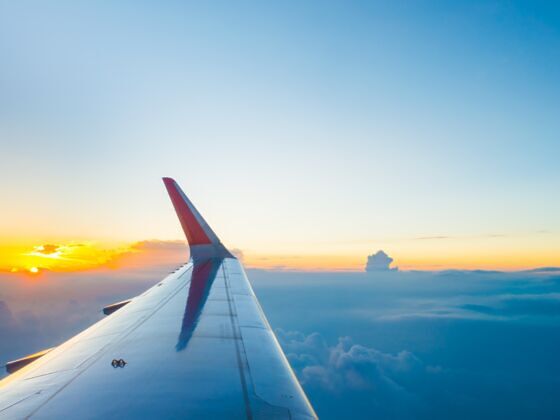There’s something very calming about the pilot’s announcement that the plane has reached cruising altitude. If you’re an anxious flyer or are iching to stroll the aisles, reaching this height brings a sense of freedom. However, you will note that it’s not always a height of 36,000 feet. Often it’s 35,000 or 40,000 feet. Each flight is unique. Commercial airplane pilots don’t just pick their cruising altitude at random. Many factors go into this calculation that prioritizes efficiency, safety, and passenger comfort. Most commercial airlines will fly between 30,000 to 42,000 feet; here’s why.


Why 36,000 Feet Is The Optimum Altitude For Airplanes
First of all, planes differ in their capabilities. “The range of an aircraft depends on its certification,” says Tomasz Lipiec, a commercial airline’s A320 Rated Senior First Officer. “The Airbus A320 family is capped at FL398 (39,800 feet), while the Boeing 737NG operates at FL410 (41,000 feet),” Lipiec goes on to explain.
However, the main reason an aircraft will fly at a specific altitude is for fuel optimization shares Lipiec. As you ascend, the air thins out, reducing drag on the aircraft. This translates to less resistance against the plane’s forward motion, allowing it to fly faster while burning significantly less fuel. Airlines operate on tight margins, and maximizing fuel efficiency directly translates to substantial cost savings.
Jet streams at these altitudes can also propel aircraft forward, says Lipiec. “My record is 180 knots (almost 280 mph) of tailwind, resulting in ground speed in excess of 650mph,” he shares. Catching a tailwind can significantly increase ground speed. That’s why you often are pleasantly surprised when your pilot announces that the flight time is reduced, and not so when the wind works against the aircraft on the return leg.
The higher altitude also places commercial flights above most weather systems. This significantly reduces turbulence, creating a smoother and more comfortable journey for passengers. Lipiec reminds us that hazardous weather is often unavoidable. “Storm cells,” he says, “occasionally extend beyond an aircraft’s capabilities.” In these instances, pilots often fly horizontally to avoid causing turbulence.
Safety is another crucial factor. Flying high grants pilots precious time in the event of an emergency. Should an engine malfunction or another critical issue arise, the extra altitude gives pilots more time to react, diagnose the problem, and initiate necessary procedures, potentially leading to a safer outcome.
However, there’s a limit to how high commercial planes can fly. As you climb even further, the air becomes exceedingly thin, posing challenges to engine performance. Jet engines require a specific amount of oxygen for efficient combustion, and the rarefied air at extreme altitudes can hinder this process. Additionally, the risk of encountering stall conditions, where the wings no longer generate enough lift to keep the plane airborne, increases significantly at very high altitudes.
You can rest assured you’re in good hands. Commercial airplanes operate within a carefully selected altitude range that balances the benefits of fuel efficiency, smooth flight, and safety. “Pilots and operators carefully evaluate all relevant factors to ensure a smooth and secure flight experience,” says Lipiec.